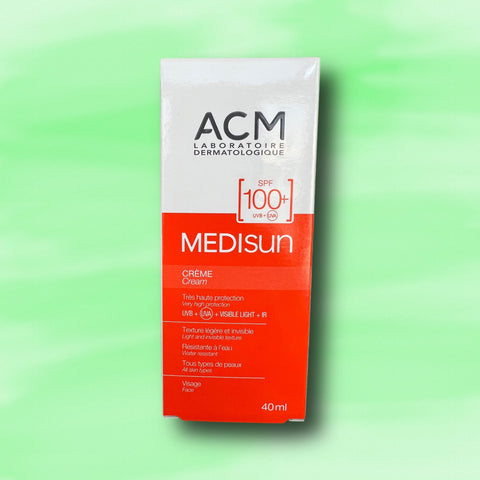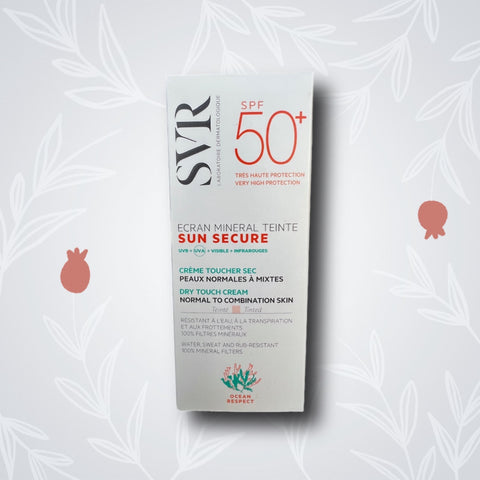What is Sunscreen?
Sunscreen is an essential daily skincare product. It protects the skin from various problems caused by ultraviolet (UV) rays and should be used throughout the year, whether summer or winter. Sunscreen is important for all age groups and genders—it’s a universal necessity for healthy skin.
Why Should We Use Sunscreen?
There are many reasons and risks that make using sunscreen a non-negotiable part of skincare:
-Prevents skin sagging and signs of aging
-
One of the main causes of premature aging is UV radiation, especially after ozone layer thinning has increased UV exposure.
-
UV rays break down collagen, leading to wrinkles, fine lines, and sunburn.
-Protects against skin cancer
- The number of people diagnosed with skin cancers (such as squamous cell carcinoma and basal cell carcinoma) has increased recently.
-
Sunscreen helps reduce the risk of skin cancer by shielding the skin from harmful UV rays.
-Prevents sunburn
-
It’s recommended to use broad-spectrum sunscreens that protect against both UVA and UVB rays.
How to Use Sunscreen Properly
-Cleanse the skin with a suitable facial cleanser.
-Apply a moisturizer suited for your skin type.
-Use the correct amount of sunscreen (about two full finger lengths).
-Apply sunscreen 20-30 minutes before going outdoors for optimal absorption and protection.
What Does SPF Mean?
The SPF (Sun Protection Factor) number on sunscreen packaging indicates the product’s ability to protect the skin from UVB rays.
-The higher the SPF number, the greater the protection.
-A lower SPF provides less protection.
Types of Sunscreen
Chemical Sunscreen
-
Composed mainly of organic compounds such as cinnamates, benzophenones, salicylates, and Parsol.
-
Works by absorbing UV rays in the skin’s outer layers, converting them into heat, and then releasing the heat through the skin.
-
Needs to be reapplied every two hours for optimal protection.
-
Begins working 30 minutes after application.
-
Advantages: Does not leave a white cast on the skin.
-
Disadvantages: May cause irritation in sensitive skin.
Examples of Chemical Sunscreens:



Physical (Mineral) Sunscreen
Physical sunscreen mainly contains zinc oxide and titanium dioxide. It works by creating a physical barrier on the skin that reflects UV rays away from the skin’s surface, preventing them from penetrating and causing damage.
-Advantages:
-
Suitable for sensitive skin—unlike chemical sunscreens, which may trigger irritation or allergies.
-
Starts working immediately upon application—no need to wait before sun exposure.
-
Does not require frequent reapplication like chemical sunscreens (unless after swimming, sweating, or towel-drying).
-Disadvantages:
-
Tends to have a thicker, heavier texture compared to chemical sunscreens.
-
May leave a white cast on the skin, especially on darker skin tones.
Examples of Physical Sunscreens



How to Choose the Right Sunscreen?
Skin is generally classified into different types:- Dry skin
- Oily and combination skin
- Normal skinChoosing the right sunscreen depends on your skin type.
How to Identify Your Skin Type?
- Dry Skin:- No visible pores
- Prone to cracking and flaking
- More likely to peel compared to other skin types
Choosing Sunscreen for Dry Skin
For dry skin, it’s important to select a sunscreen with a creamy texture—this is often indicated on the packaging as "crème".These formulations provide hydration and nourishment to prevent further dryness and protect the skin barrier.Note: Creamy sunscreens are also suitable for normal skin.
Examples of Sunscreens Suitable for Dry Skin



Vichy skin perfecting velvety cream SPF50+
Oily Skin
-Oily skin is characterized by visible pores, unlike dry skin.
-It tends to have excess oil production across the entire face, not just in certain areas like combination skin.
-Oiliness typically appears in the form of a T-zone (forehead, nose, and chin).
-The skin has a shiny appearance and is more prone to acne and blackheads.
Choosing Sunscreen for Oily and Combination Skin
When selecting sunscreen for oily or combination skin, it’s important to choose a formula with a gel-like or lightweight lotion texture (labeled as gel or lotion).
Look for labels such as:
-Dry touch
-Fluid
These sunscreens are designed to:
- Control shine
- Provide a matte finish
- Avoid clogging pores
Examples of Sunscreens for Oily or Combination Skin
Vichy mattifying face fluid dry touch SPF 50+




Examples of Sunscreens for Sensitive Skin, Especially Those Prone to Rosacea and Redness

Note:
There are special sunscreens formulated for children to protect them from the potential side effects of certain sunscreen ingredients.
These sunscreens often contain gentler ingredients, such as:
-Titanium dioxide
-Avobenzone
These ingredients provide broad-spectrum protection while being safe and gentle for children’s delicate skin.
Examples of Sunscreens Formulated for Children:
Avene spray sunscreen for children

These sunscreens are often available in a spray format, making them easier to apply on younger age groups or when reapplying during outdoor activities like swimming.
Spray sunscreens are also convenient for body application, especially in areas that are hard to reach.
Examples of Sunscreen Sprays
LA ROCHE POSAY anthelios SPF 50 invisible anti shine face mist

Tinted Sunscreen (TINTED SUNBLOCK)
There are also types of sunscreens available as tinted formulas, offering light coverage similar to a foundation while providing sun protection. These are ideal for those who want even skin tone and sun protection in one step.
Examples of Tinted Sunscreens (with Light Foundation-Like Coverage):
Avene tinted fluid sunscreen SPF 50+



There are also sunscreens specially formulated for treating hyperpigmentation and dark spots
Examples of Sunscreens for Treating Hyperpigmentation:








